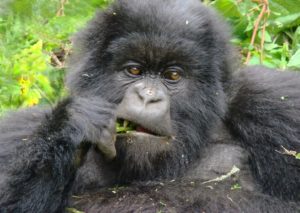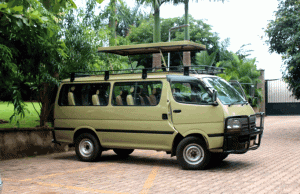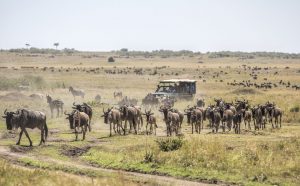Top sites to visit on a tour in Rwanda

Rwanda is the smallest country located in East Africa and it is bordered by countries like Uganda, Tanzania, Burundi and Democratic Republic of Congo with Kigali being its capital and largest city since independence in 1967 hosting the President’s main residence, state house and other government offices under President Paul Kagame’s rule from 2000 up to date.
Rwanda’s population is at 12,608,676 as of Sunday, November 18th, 2018, following the latest estimates by the United Nations and Kigali city boosts with some of the finest museums in Africa and they include;
Kandt House Museum of Natural History
This is a museum in Kigali, Rwanda established in 2006 in memory of German resident Richard Kandt at his former home on the Nyarugenge Hill under the management of the Institute of National Museums of Rwanda.
The Presidential Palace Museum
Presidential Palace Museum locally known as ‘Habyarimana House’ is the former state house of Rwandan ex-President Habyarimana whose plane was shot down on 6 April, 1994, killing him together with former Burundian President Cyprien Ntaryamira causing the worst genocide of human history in Rwanda. Estimated 1 million human lives were lost in 100 days from 7th April, 1994. The Palace is found in Kanombe, on the eastern outskirts of Kigali with a concrete pond which once housed Habyarimana’s favorite pet, a 150 kg python who was supposed to protect the President from all evil spirits and bad omens.
Ethnographic Museum of Rwanda
Ethnographic Museum (Rwanda National Museum) commonly known as the Butare Museum, is the main and largest museum in Rwanda located in Butare about 35 kilometer’s by road from Kigali city center suitable enough for learning about the history and geopolitics of Rwanda.
Other great natural attractions in Rwanda include the following;
Volcano National Park (Park National des Volcans)
Volcano Park is located northwest of Rwanda established in 1925 making it the very first national park to be created in Africa, bordering Virunga National Park in Democratic Republic of Congo and Mgahinga Gorilla National Park in Uganda covering 160 square kilometers of land dominated by rainforest and bamboo, the park is a haven for the rare and endangered mountain gorillas and golden monkeys with five out of the eight volcanoes of the Virunga Mountains ( Karisimbi, Bisoke, Muhabura, Gahinga and Sabyinyo) and in the park Daine Fossey, the American zoologist was buried at Karisike Research Center.
Akagera National Park
This national park eats up 1,200 square kilometers (120,000 ha) of land and lies in Eastern Rwanda stretching along the Tanzanian border and it was established in 1934 to protect the wildlife animals and the vegetation that make up the ecosystem. The park is named after Kagera River which flows eastwards into lakes like Lake Ihema which is the largest in Rwanda therefore giving you a great experience in the African wilderness.
Nyungwe Forest
It is located in the Southwestern part of Rwanda bordering Burundi to the South and lake Kivu and the Democratic Republic of Congo to the West, and it has a 970 square kilometer national park named after it which protects and harbors 13 primate species, 275 bird species, 1068 plant species, 85 mammal species, 32 amphibian and 38 reptile species. An accelerating activity in this forest is the canopy walk through a highly suspended bridge with breathtaking views of the valleys and the forest.
Lake Kivu
Lake Kivu is Rwanda’s largest lake and Africa’s 6th largest in the western part of Rwanda with its 3 major towns of Kibuye, Gisenyi and Cyangugu expanding beside it. The lake has beaches with freshening waters and great sand with hotels also having beaches with sports options in them giving visitors a remarkably satisfying beach time in Rwanda.
The Rwandan Genocide
Rwanda in April 1994 fell into a holocaust when President Habyarimana’s plane was shot down together with ex-Burundian President Cyprien Ntaryamira near Kigali Airport which led to his assassination and as a result, within 100 days after that tragic event starting on 7th April about 500,000- 1,000,000 Tutsi and Hutu were massacred by the interim government in well-planned attacks until the Rwandan Patriotic Front took control on 4th July leaving several genocide memorial sites in the entire country and they include;
Murambi genocide memorial site- With about 2,700 people massacred in this specific school, it is now deserted by its residents since the end of the Rwandan genocide and government renovated it and established it as a preservation area and an exhibition for Rwandan tourism industry with one mass grave dug and the victims were given a descent burial.
Gisenyi genocide memorial site– An estimated 1,200 remains of those who cruelly died in the Rwandan genocide are collected in Gisenyi including the grave of Madamme Carr who was an American managing Imbabazi orphanage and some other remains were collected from Nyundo and Corniche areas.
Ntarama genocide memorial site– About 5000 people most of them being women and children were murdered in this church just 30 kilometers away from Kigali where they had gone to seek refuge and since then this church has been conserved and made a viewing site in commemoration of the people who fell victims to the holocaust.
Nyamata memorial site– This was a church located in Bugesera district 35 kilometers away from Kigali city and an approximate of 2,500 people were murdered as they went seeking refuge. The church is still in existence in remembrance of the victims of 1994 Rwandan genocide.
Gisozi genocide memorial site– This is where a large number of the Tutsi were murdered in cold blood by the Hutu and in 2000 both the Tutsi and Hutu victims were buried in Gisozi making it a tourism center in 2004 with about 300,000 people buried in here.
Nyanza memorial site- At the ETO school governed by the UN in Nyanza, many of the Hutus and a few Tutsis were murdered while seeking refuge after the departure of the UN troops who were deployed in Rwanda before the genocide broke out. Every year 11th April is a ritual day meant to remember the victims of the holocaust at Nyanza.
Bisesero genocide memorial site- An estimated 30,000 people were massacred in Bisesero in the district of Karongi on the lower slopes of Kibuye region, Western Rwanda occupied by the Tutsi who fought in defense of their lives and property but because of the inferiority of their weapons, the Hutus defeated and killed many of them and the site is now referred to as the hill of resistance.
Nyarubuye memorial site- This place was a convent and school where many of the Tutsis estimated to be 20,000 were man-slaughtered as they tried escaping into Tanzania but in 2003 the government renovated the school which is currently in operation with a number of students and the convent reserves the remains of the victims.
The 1994 holocaust damaged Rwanda but the Rwandan government with support from their allies rebuilt it into a paradise that softly attracts the entire world, in short there are more places to visit without dark memories as named below.
To visit any of the above attraction sites in Rwanda, simply call us today on +250-787309366 or send us an email to booking@tristarafricaskimmersafaris.com





